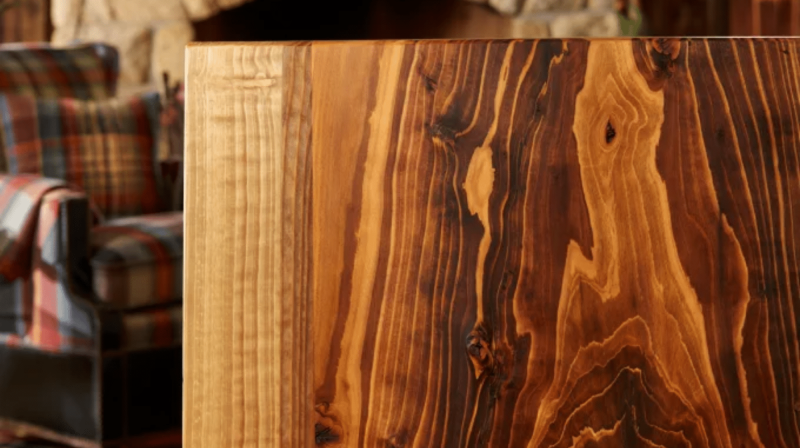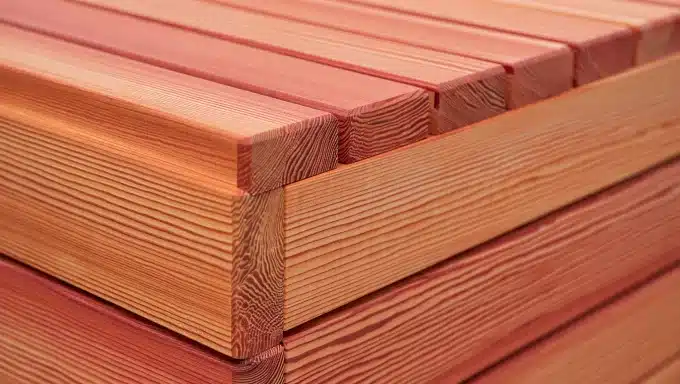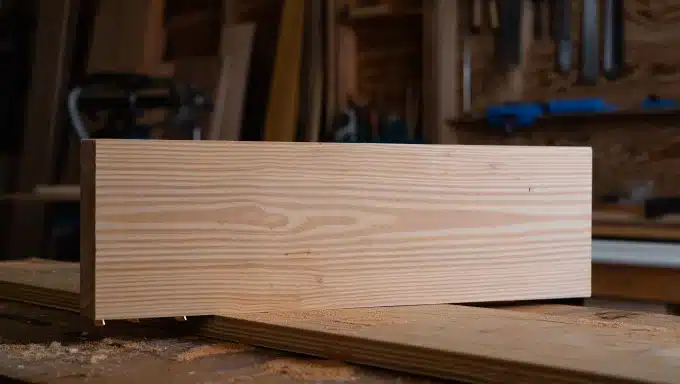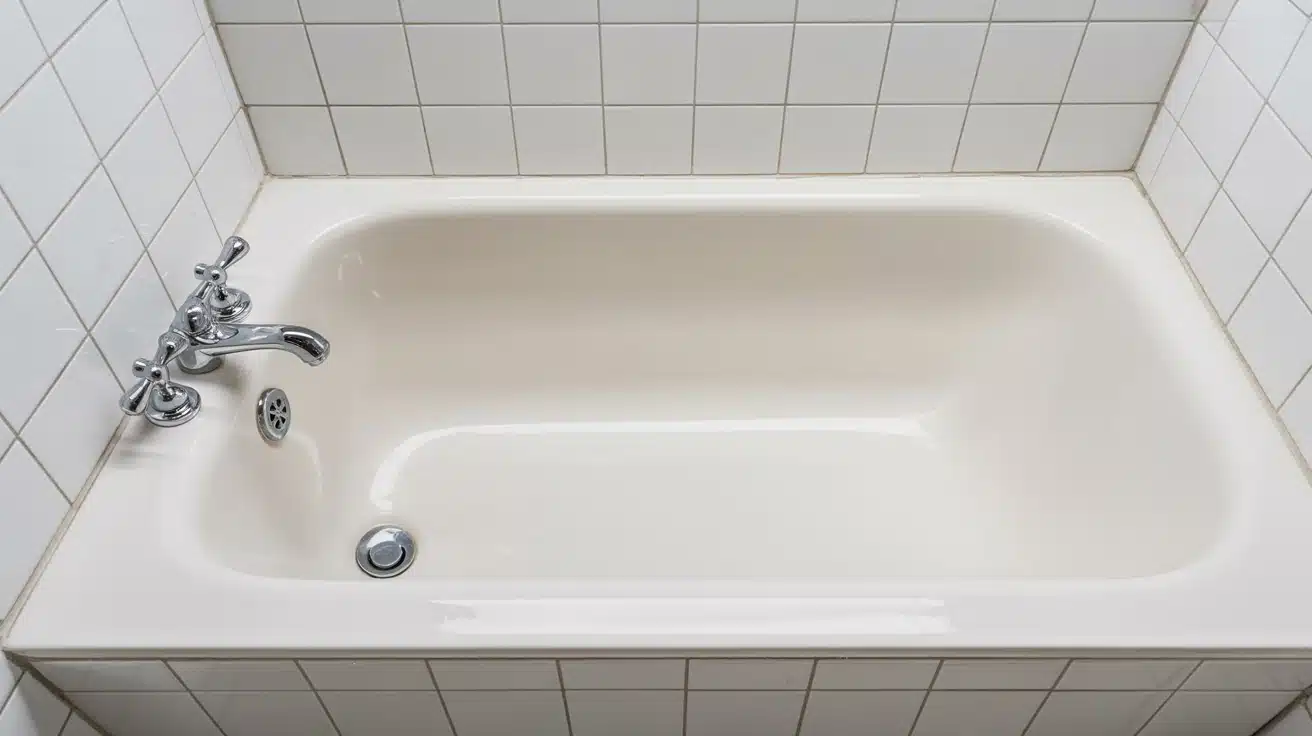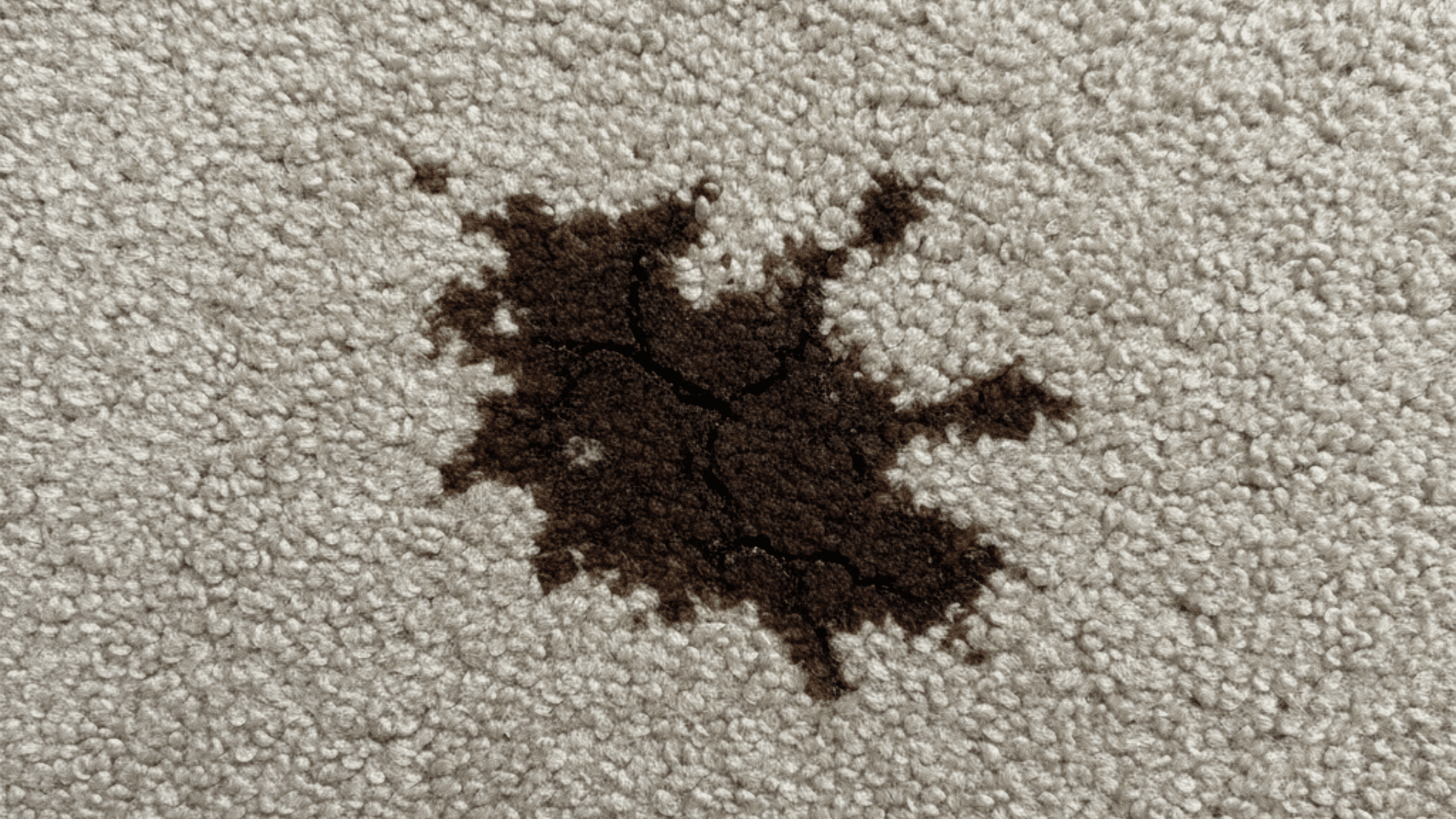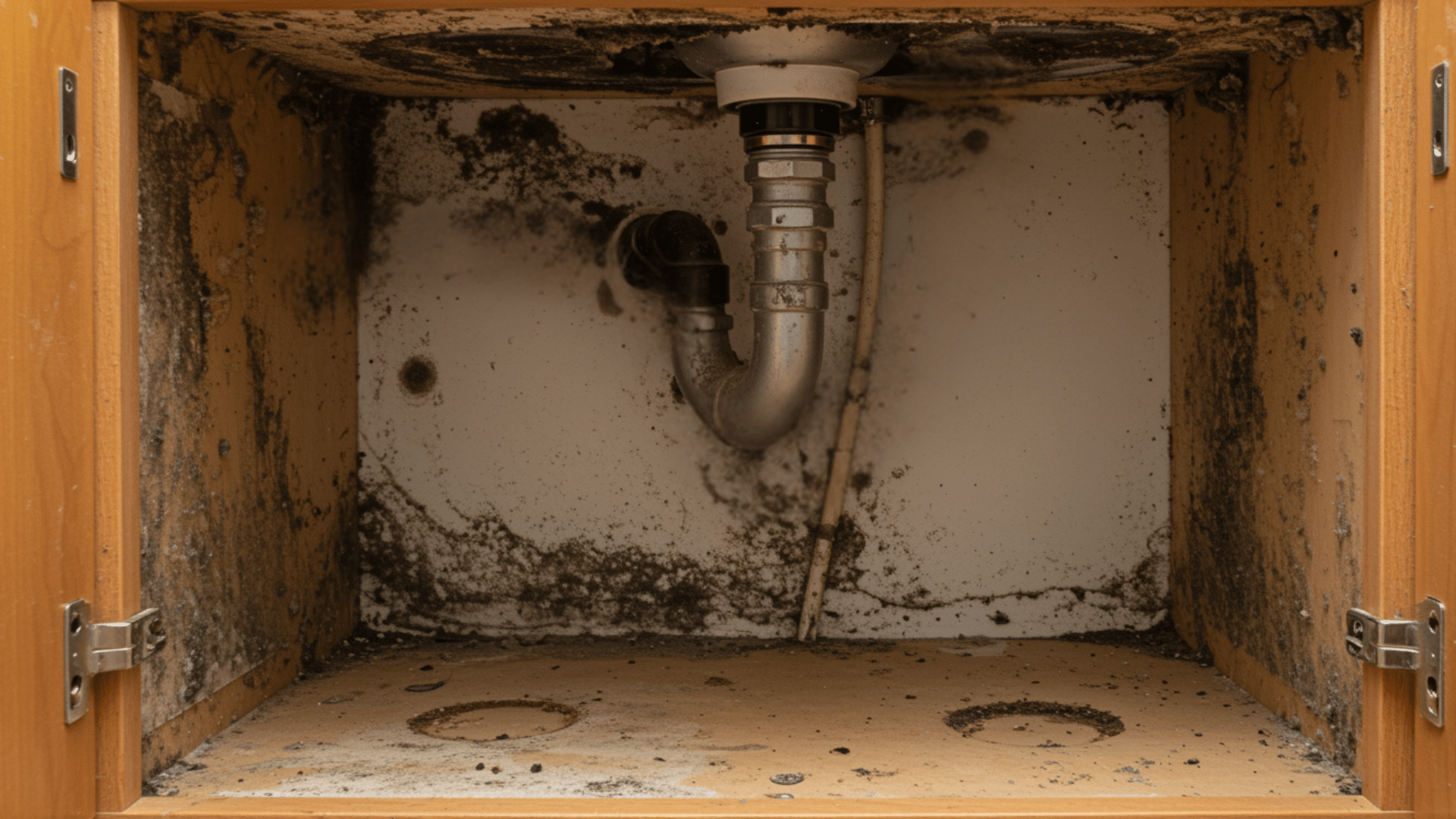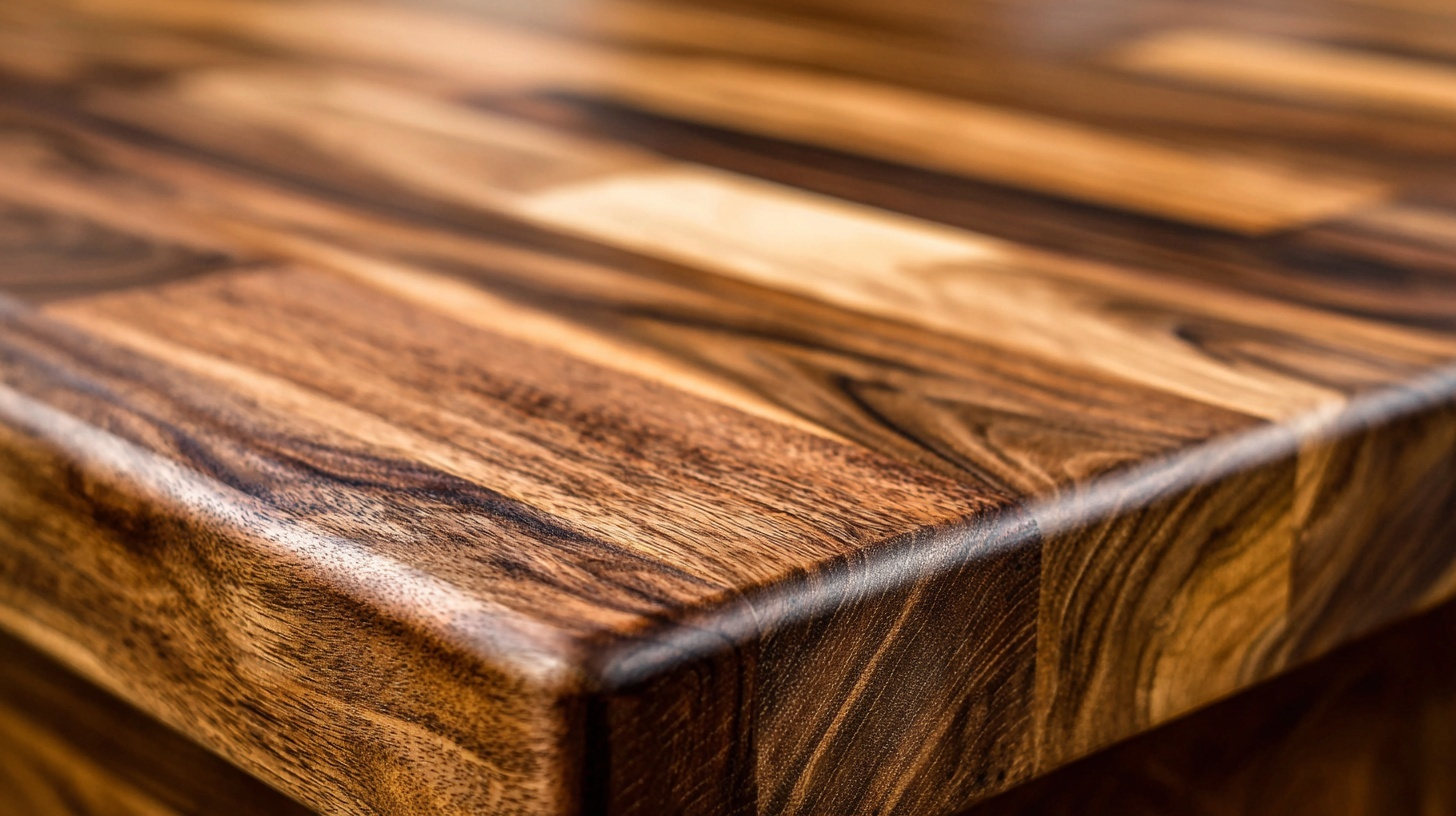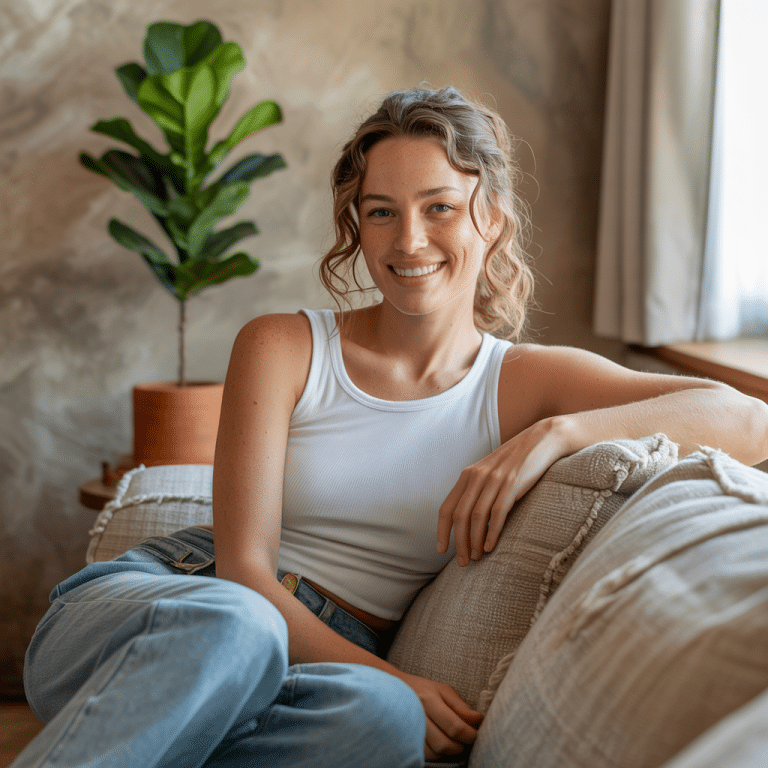Choosing furniture can feel overwhelming when you see so many wood options.
I get it – walking into a store and hearing terms like “hardwood,” “softwood,” and “engineered wood” can make your head spin. You want furniture that looks good, lasts long, and fits your budget.
I’ll break down everything you need to know about wood selection for your home pieces.
Understanding the various types of wood for furniture helps you make smart buying decisions. You’ll learn about popular wood varieties, their costs, and which ones work best for different furniture needs.
Why Should You Go for Wood?
Wood furniture beats other materials in ways that matter to your daily life. I’ve seen people choose plastic, metal, or glass furniture, then regret it later.
Wood furniture lasts decades with proper care. I have oak chairs from my grandmother that still look great after 60 years.
Metal can rust, glass breaks, but well-made wood furniture serves families for generations. When my dining table got scratched, I sanded and refinished it to look brand new again. You can’t do that with laminate or metal furniture.
Wood adds natural warmth to your home that cold metal and sterile plastic simply can’t match.
The grain patterns and rich colors create cozy, lived-in spaces that feel welcoming. Quality wood pieces hold their value well, often selling for good money even after years of use.
All Types of Wood to Choose from for Furniture
Each type of wood for furniture brings unique qualities – from oak’s strength to pine’s affordability.
Understanding these different types of wood for furniture helps you pick the perfect option for your specific needs and budget.
1. Oak
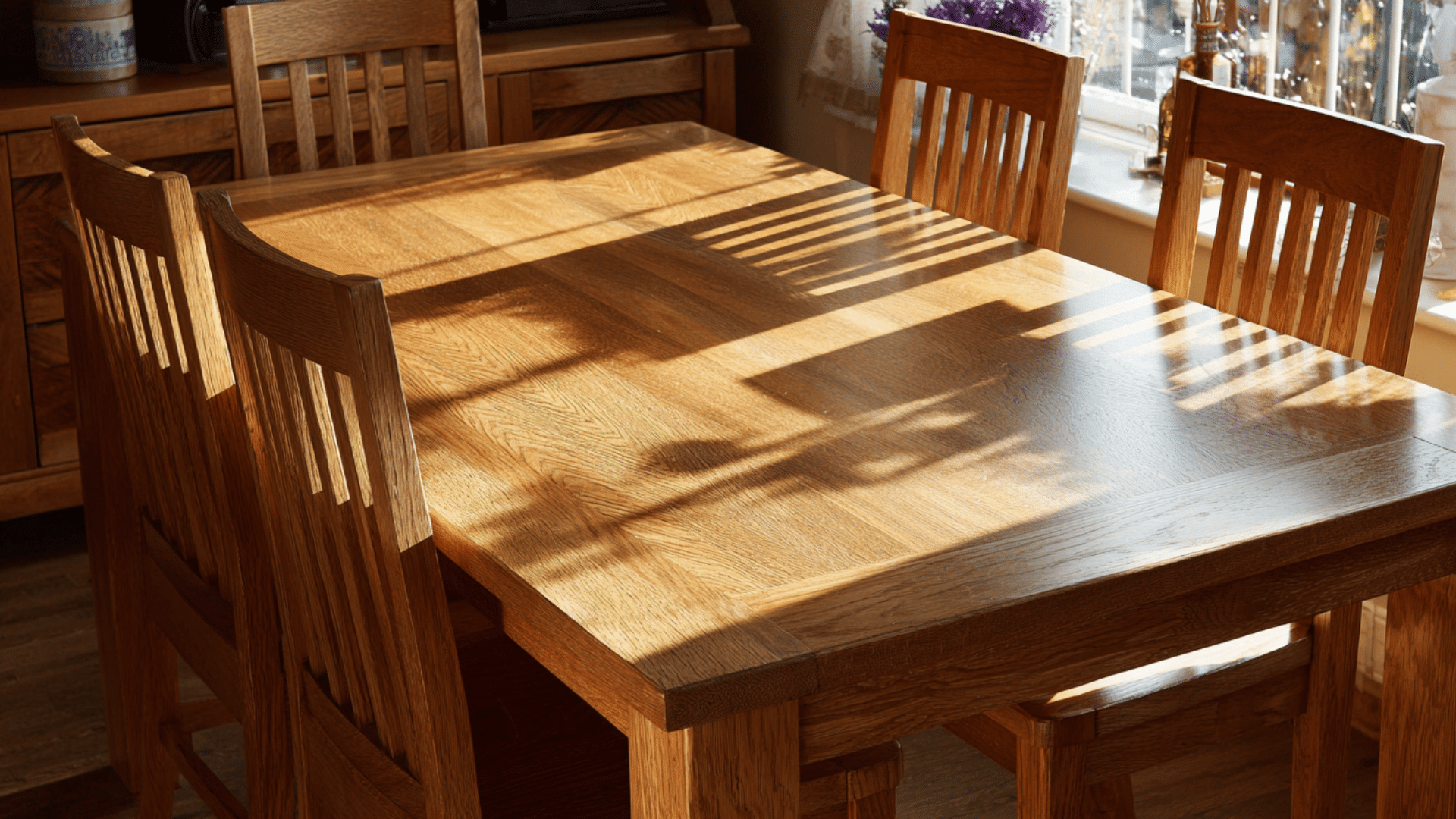
Oak ranks as one of the most popular choices for furniture making. The wood has a beautiful grain pattern that shows through most finishes.
Oak furniture can last 50 years or more with basic care. It holds screws well and works great for heavy-use pieces.
- Wood Characteristics: Light to medium brown, very hard.
- Best Uses: Dining tables, chairs, cabinets, and flooring.
- Pros: Beautiful grain, widely available.
- Cons: Can be heavy, more expensive than softwoods.
- Price: $3-8 per board foot.
2. Maple
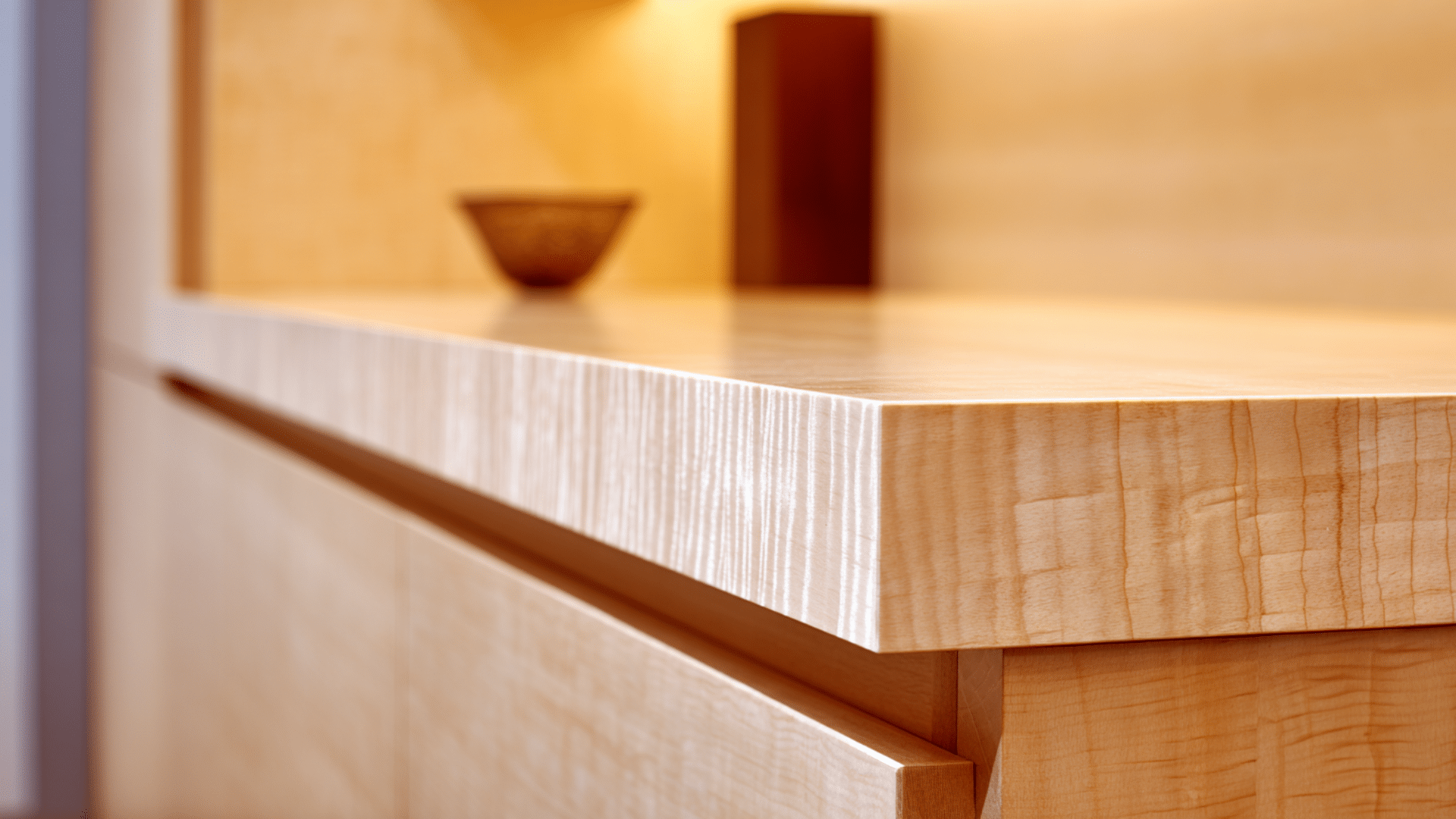
Maple gives you a smooth, consistent look that works with any decor style. its for kitchen cabinets and dining tables.
The wood takes stain well, so you can achieve almost any color you want. It resists dents better than most woods.
- Wood Characteristics: Light cream color, fine grain, very hard surface.
- Best Uses: Kitchen cabinets, dining tables, cutting boards.
- Pros: Takes stain evenly, resists dents.
- Cons: Can be pricey, grain isn’t as visible as oak.
- Price: $4-10 per board foot.
3. Cherry
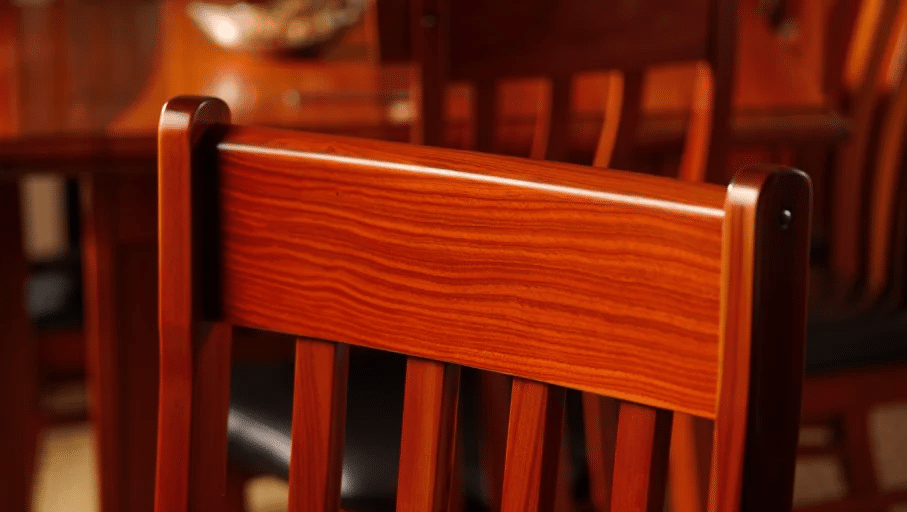
Cherry wood starts light and darkens to a rich reddish-brown over time.
The color change happens naturally when exposed to light. This makes each piece unique as it ages. Cherry works well for formal furniture pieces.
- Wood Characteristics: Light pink to deep red, smooth texture, medium hardness.
- Best Uses: Formal dining sets, bedroom furniture, and cabinets.
- Pros: Beautiful color changes, smooth texture, high-end appearance.
- Cons: Expensive, can show scratches easily, and color changes unevenly.
- Price: $8-15 per Board Foot.
4. Walnut
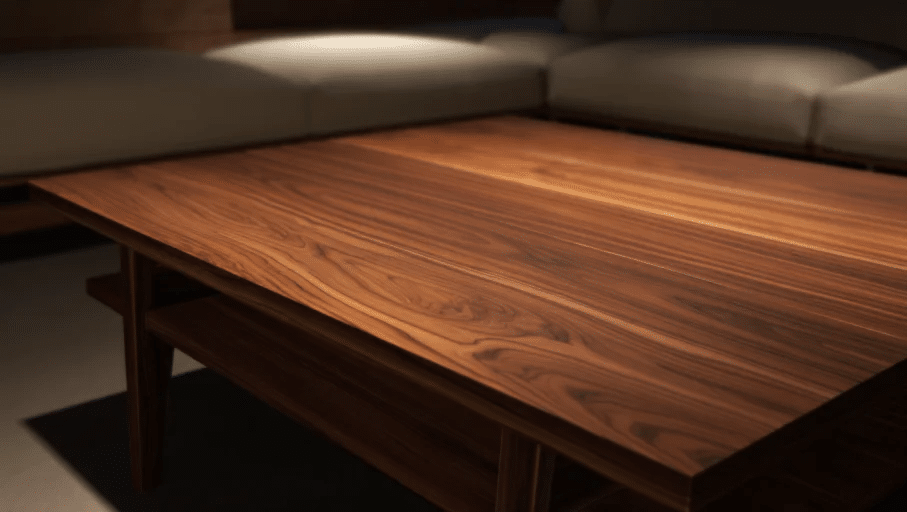
Walnut delivers rich, dark chocolate colors that look expensive. The grain patterns are often striking and unique. This wood costs more but creates furniture that stands out in any room.
- Wood Characteristics: Dark brown to black, medium to hard.
- Best Uses: High-end furniture, gun stocks, decorative pieces.
- Pros: Luxury appearance, stable wood.
- Cons: Very expensive, limited availability, can fade in sunlight.
- Price: $12-20 per board foot.
5. Mahogany
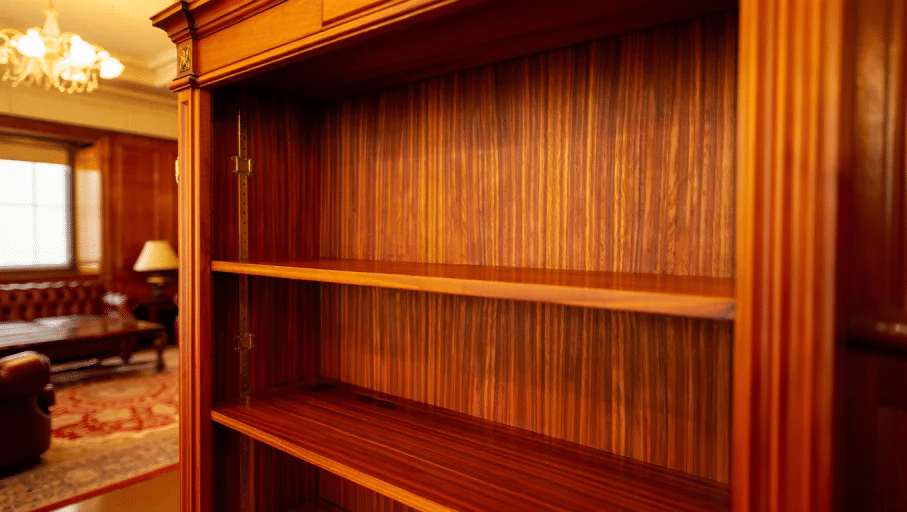
Mahogany offers a reddish-brown color that deepens with age. It’s been used for fine furniture for centuries. The wood machine works well and takes finishes beautifully.
Mahogany resists warping and splitting better than many woods.
- Wood Characteristics: Straight grain, medium hardness.
- Best uses: Boat building, musical instruments.
- Pros: Beautiful color, stable, machines well, and historic appeal.
- Cons: Expensive, some species are protected, and limited availability.
- Price: $8-15 per board foot.
6. Teak
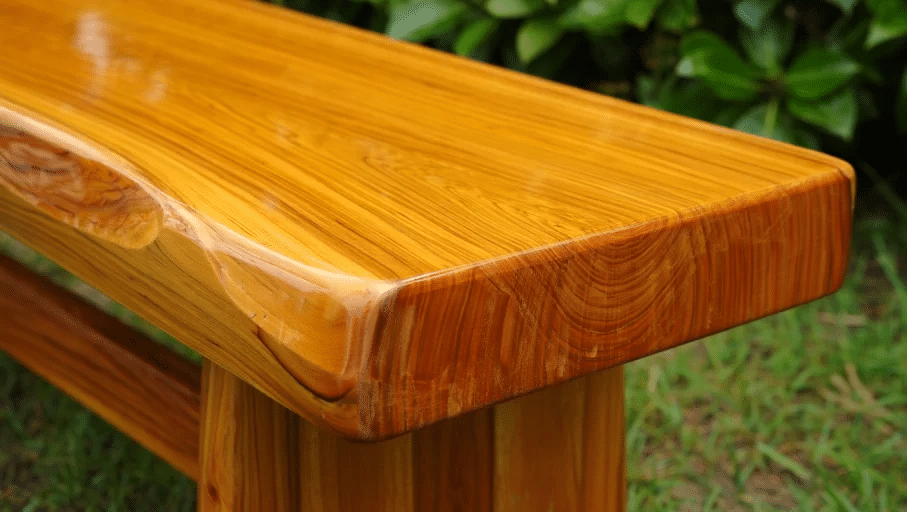
Teak naturally resists water, insects, and rot. This makes it perfect for outdoor furniture.
The wood has natural oils that protect it from the weather. Teak furniture can last decades outside with minimal care.
- Wood Characteristics: Golden brown, very water-resistant.
- Best uses: Outdoor furniture, boat decks, bathroom fixtures.
- Pros: Weather resistant, long-lasting outdoors.
- Cons: Very expensive, limited supply, can be slippery when wet.
- Price: $15-25 per board foot.
7. Ash
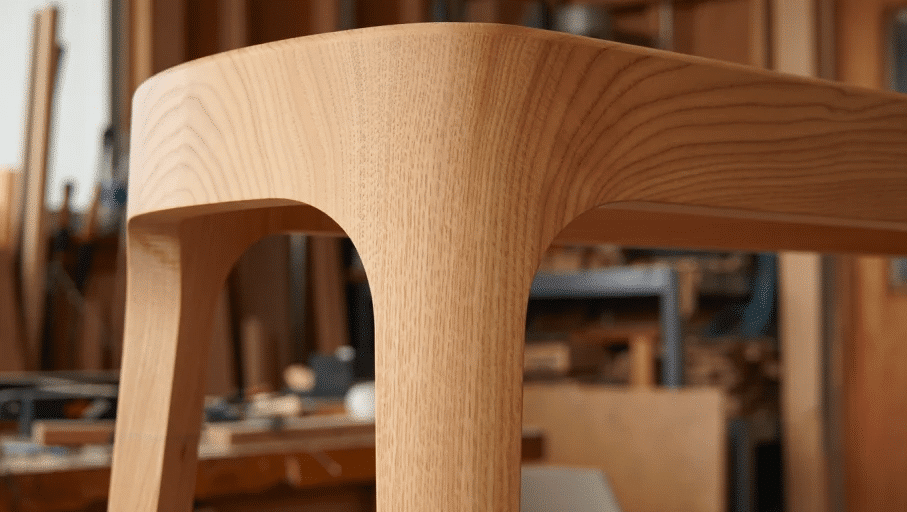
Ash combines strength with flexibility, making it perfect for chairs and tool handles.
The wood has a light color with prominent grain lines. It bends well when steamed, so furniture makers love it for curved pieces.
- Wood Characteristics: Light tan, very strong.
- Best uses: Chair frames, sports equipment.
- Pros: Bends well, affordable hardwood.
- Cons: Can splinter, grain can look busy, and limited availability.
- Price: $3-7 per board foot.
8. Birch

Birch provides a smooth, even texture that takes paint and stain well. It’s often used as a less expensive alternative to maple. The wood has a light color and fine grain pattern that works in modern settings.
- Wood Characteristics: Light cream, medium hardness.
- Best uses: Cabinets, plywood, painted furniture.
- Pros: Finishes well.
- Cons: Not as hard as maple, can dent, limited grain interest.
- Price: $2-5 per board foot.
9. Hickory
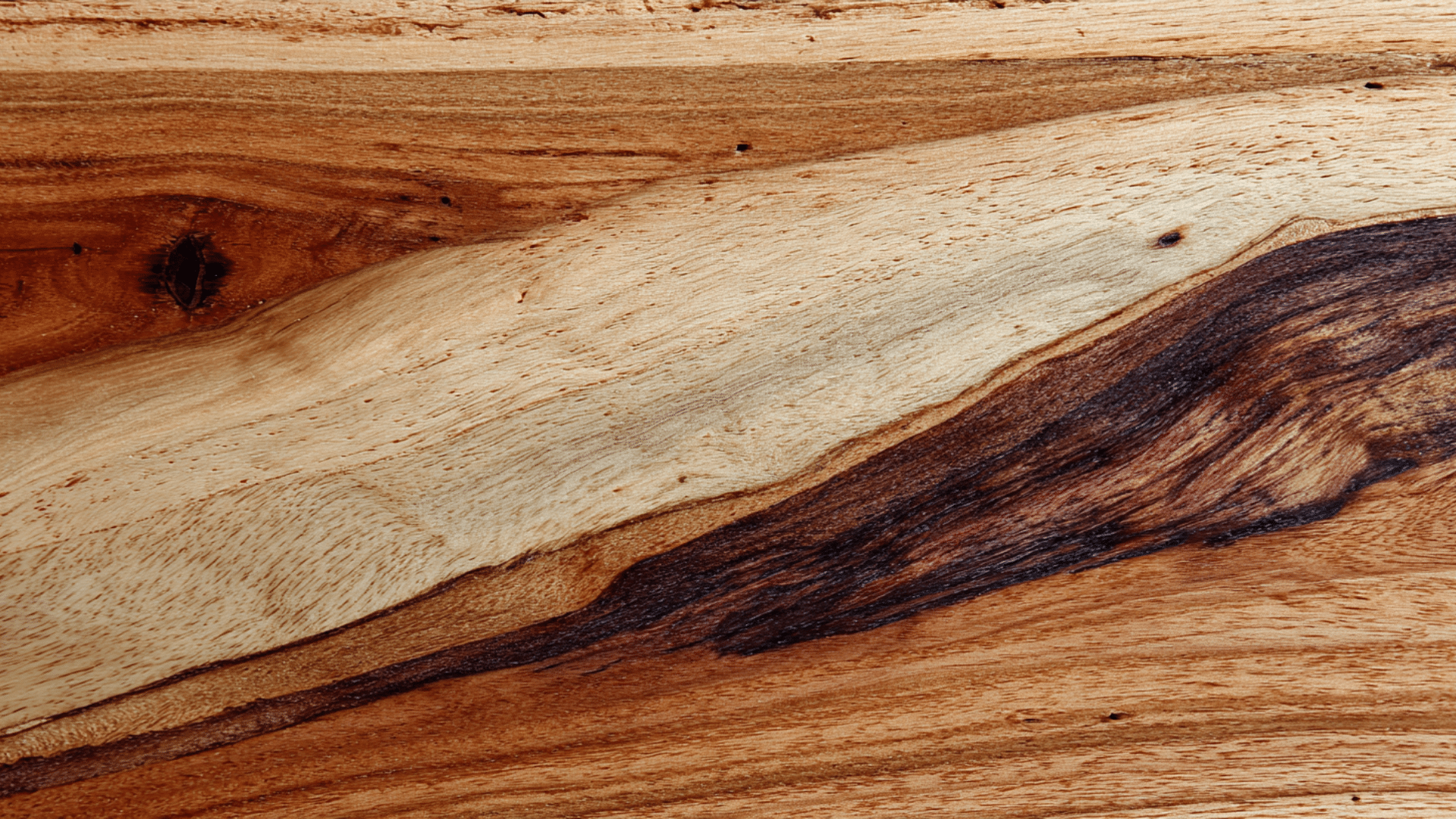
Hickory ranks as one of the hardest woods available. It has a rustic look with contrasting light and dark grain.
This wood works well for country-style furniture and pieces that need extra strength.
- Wood Characteristics: Light with dark streaks, pronounced grain contrast.
- Best uses: Tool handles, flooring.
- Pros: Unique appearance, strong, good value.
- Cons: Hard to work with, rustic look isn’t for everyone.
- Price: $3-6 per board foot.
10. Beech
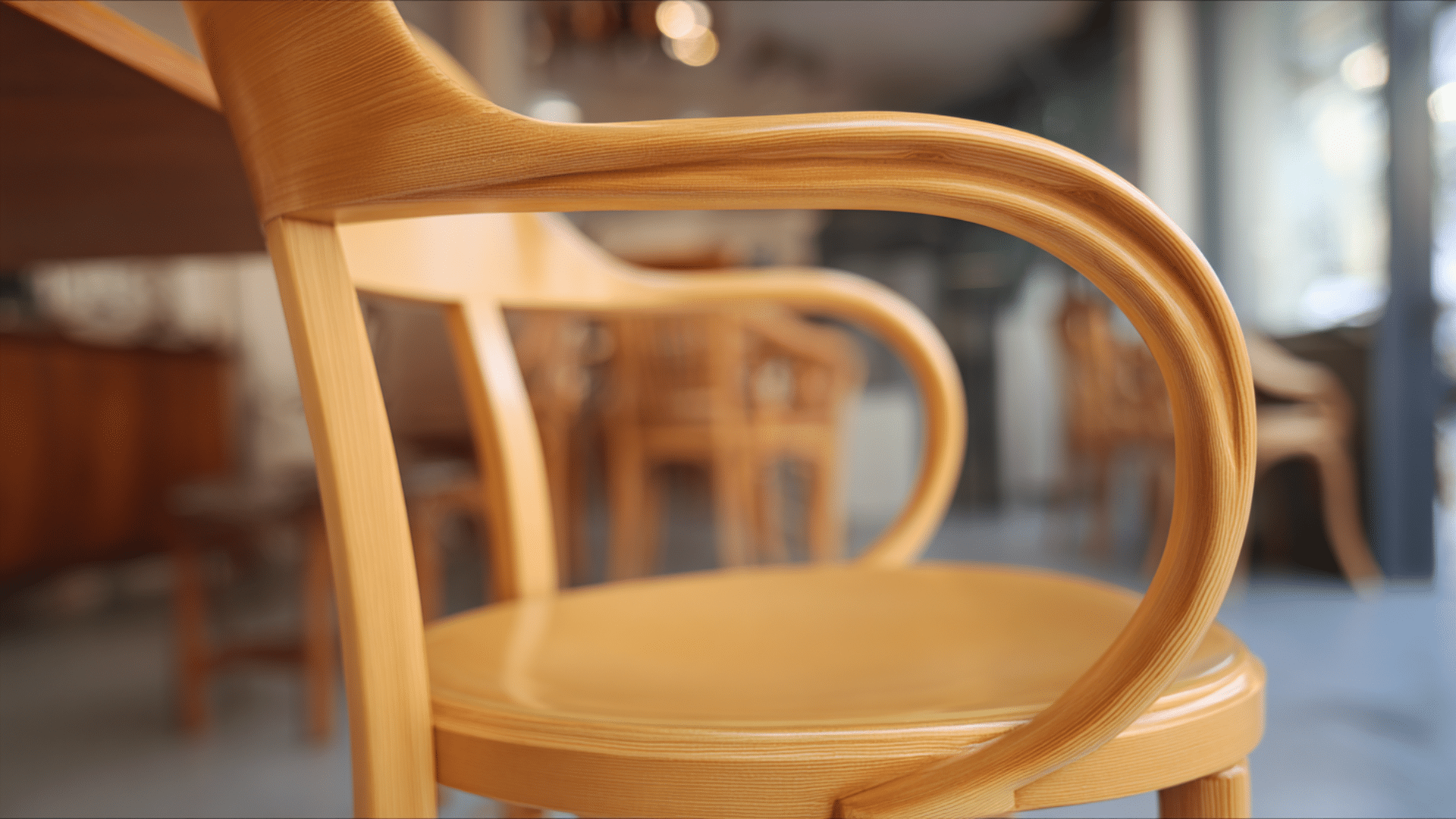
Beech offers a light color with small, consistent grain patterns. European furniture makers have used it for centuries. The wood steams and bends well for curved furniture pieces.
- Wood Characteristics: Light tan, fine-grain, hard, and dense
- Best uses: Chair frames, bent-wood furniture, tool handles.
- Pros: Hard surface, affordable, smooth texture.
- Cons: Can warp, not widely available in some areas.
- Price: $2-5 per board foot.
11. Poplar

Poplar grows fast and costs less than most hardwoods. It has a light color that takes paint beautifully. Furniture makers often use it for parts that won’t show, like drawer sides and cabinet backs.
- Wood Characteristics: Light green-yellow, soft hardwood, minimal grain.
- Best uses: Painted furniture, hidden parts, craft projects.
- Pros: Very affordable, easy to work with.
- Cons: Soft surface dents easily, not an attractive natural finish.
- Price: $1-3 per board foot.
12. Pine
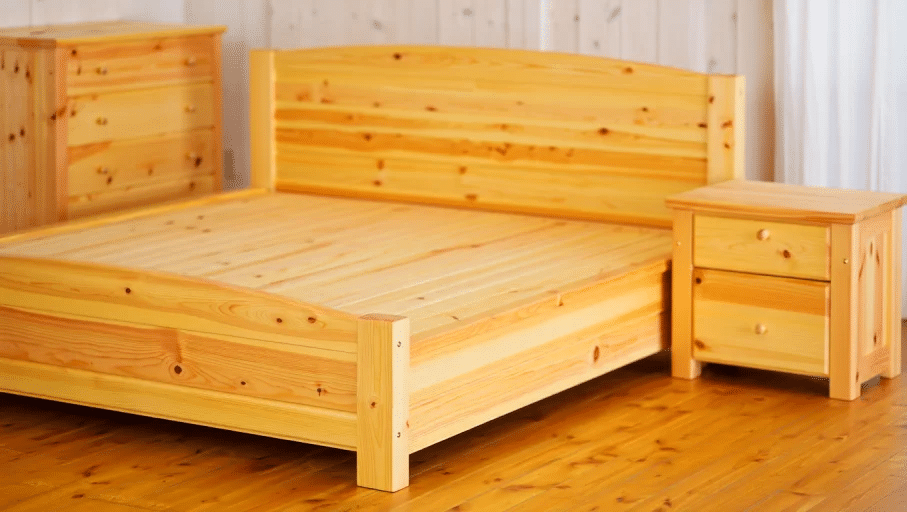
Pine offers an affordable option for furniture. It has a pleasant smell. The wood is soft, so it dents easily, but it’s perfect for painted pieces or casual furniture in bedrooms.
- Wood Characteristics: Light yellow, visible knot.
- Best uses: Bedroom furniture, rustic furniture.
- Pros: Very affordable, lightweight, easy to work with.
- Cons: Soft surface dents easily, and resin can bleed through paint.
- Price: $1-3 per board foot.
13. Cedar
Cedar naturally repels insects and resists rot. It has a distinctive smell that many people love. The wood works well for storage furniture. Cedar stays stable in changing weather conditions.
- Wood Characteristics: Reddish color, lightweight, naturally resistant.
- Best uses: Outdoor furniture, closet linings.
- Pros: Insect resistant, pleasant smell, weather resistant, lightweight.
- Cons: Soft surface, can be expensive, limited strength.
- Price: $2-6 per board foot.
14. Fir
Fir provides good strength at a reasonable price. It has a straight grain. The wood works well for casual furniture and painted pieces. Many people use it for farmhouse-style furniture.
- Wood Characteristics: Light color, medium strength.
- Best uses: Rustic furniture, construction.
- Pros: Good strength-to-cost ratio, widely available.
- Cons: Can have pitch pockets, not as attractive as hardwoods.
- Price: $1-4 per board foot.
15. Plywood
Plywood consists of thin wood layers glued together. It’s stronger than solid wood in some ways and won’t warp. Use this for furniture parts you don’t see. It costs less than solid wood.
- Wood Characteristics: Consistent thickness, various face veneers
- Best uses: Cabinet backs, shelving.
- Pros: Less expensive, strong.
- Cons: Edges need covering, not solid wood, and can chip.
- Price: $20-60 per 4×8 Sheet.
What to Consider When Choosing Wood for Furniture
Several key factors help you choose the best types of wood for furniture that match your lifestyle.
Consider sustainability, strength, customization options, and long-term value when selecting wood for your home pieces.
Sustainability: Wood comes from renewable trees when harvested responsibly. Many furniture makers now use certified sustainable wood sources. This makes wood more environmentally friendly than plastic alternatives that sit in landfills for centuries.
Strength and Durability: Different woods offer varying strength levels. Oak and maple handle heavy use for decades. Pine works for lighter applications but dents more easily. Solid wood outlasts most alternatives when properly maintained.
Customizability: Wood accepts stains, paints, and finishes beautifully. You can change the color or refresh the look years later. Sand and refinish worn surfaces to make them look new again. This flexibility beats fixed-color plastic or metal furniture.
Long-term Value: Quality wood furniture holds its worth over time. Well-made pieces often sell for good money even after years of use. Cheap alternatives lose value quickly and need frequent replacement.
Comparison with Alternatives of Wood
Wood furniture outperforms plastic, metal, and MDF alternatives in durability, appearance, and long-term value. While other materials may cost less upfront, wood’s ability to be refinished and its timeless appeal make it the superior choice.
- Plastic: Cheaper upfront, but cracks, fades, and feels cheap to touch
- Metal: Durable but cold feeling, can rust, limited style options.
- MDF: Less expensive but can’t be refinished, swells when wet.
Hard and Soft Wood or Engineered Wood
This comparison breaks down the key differences between the main types of wood for furniture categories.
Understanding these three wood groups helps you choose the right material for your specific furniture needs and budget.
| HARDWOOD | SOFTWOOD | ENGINEERED WOOD |
|---|---|---|
| Examples: Oak, Maple, Cherry, Walnut | Examples: Pine, Cedar, Fir | Examples: Plywood, MDF, Particleboard |
| Comes from trees that lose leaves | Comes from evergreen trees | Made from wood pieces + glue |
| Usually harder and stronger | Usually lighter and softer | More stable than solid wood |
| More expensive | More affordable | Most budget-friendly |
| Lasts 50+ years | Lasts 20-30 years | Lasts 10-20 years |
| Can be refinished multiple times | Can be refinished 2-3 times | Cannot be refinished |
| Beautiful natural grain | Simple, straight grain | No natural grain patterns |
|
Best for: Heavy-use furniture (dining tables, cabinets) |
Best for: Painted furniture (bedroom sets, casual pieces) |
Best for: Hidden parts (shelving, cabinet backs) |
| Price: $3-20 per board foot | Price: $1-6 per board foot | Price: $20-60 per sheet |
To Sum up
Choosing the right type of wood for furniture doesn’t have to be confusing. This guide is here to help you see the main differences between wood types.
Think about your budget, how you’ll use the furniture, and what style you like best. When you understand the different kinds of wood, you’ll feel more sure of yourself while shopping.
Don’t rush! Touch the wood, look closely at the grain, and don’t be afraid to ask questions. Good wooden furniture isn’t just a pretty thing- it’s something that can last in your home for many years.
Whether you pick hardwood, softwood, or engineered wood, choosing the right one really matters. The right wood will make your furniture look beautiful and stay strong for a long time.


